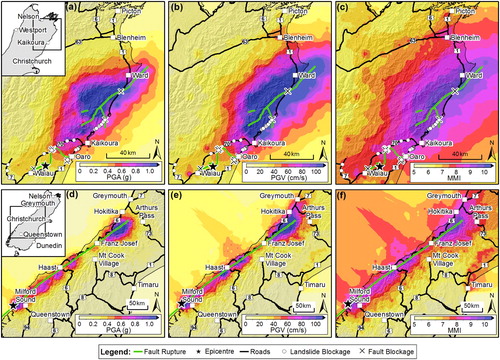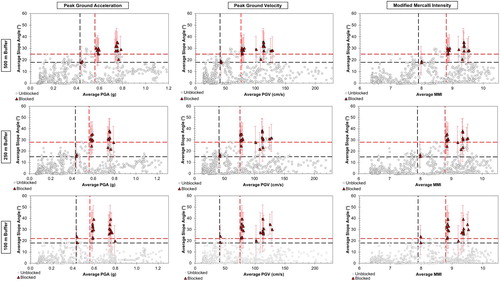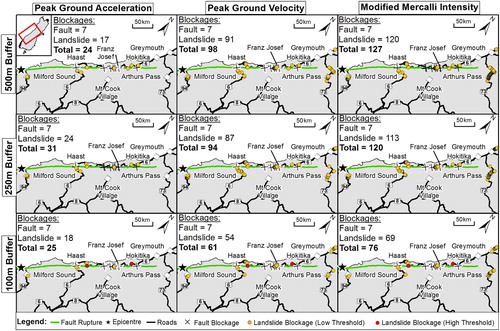Figures & data
Figure 1. Road impacts and various measures of ground shaking from the 2016 MW 7.8 Kaikōura earthquake (Bradley, Razafindrakoto et al. Citation2017) compared with a proposed MW 7.9 Alpine Fault earthquake scenario rupturing from south to north (Bradley, Bae et al. Citation2017, Bradley, Lagrava et al. Citation2017) developed for project AF8 (www.projectaf8.co.nz). A, peak ground acceleration (PGA); B, peak ground velocity (PGV); and C, Modified Mercalli Intensity (MMI) from the Kaikōura earthquake. D, PGA; E, PGV; and F, MMI for the scenario Alpine Fault earthquake. Inset in A gives location of A–C within the upper South Island. Inset in D gives location of D–F within the South Island.

Figure 2. Average slope angle compared to average peak ground acceleration (PGA), peak ground velocity (PGV) and Modified Mercalli Intensity (MMI) values within 500, 250 and 100 m buffers for each 500 m section of road network between Christchurch and Picton. Sections blocked by landslides are shown in red with the total range of variable shown by error bars. Sections unaffected by landslides are shown in grey. Black dashed lines represent lower threshold values above which 100% of landslide blockages occur. Red dashed lines represent upper threshold values maximising the number of landslide blockages above the thresholds (true positives) whilst minimising the number of unblocked sections above the thresholds (false positives).

Table 1. Upper and lower thresholds and corresponding prediction scores derived from for different buffer widths and ground shaking variables for landslide road blockages during the 2016 Kaikōura earthquake.
Figure 3. Locations of road impacts related to surface fault rupture and landslides from an Alpine Fault earthquake for different buffer widths and shaking variables. Threshold data for landslide blockages are calculated from observations of the Kaikōura earthquake from and .

